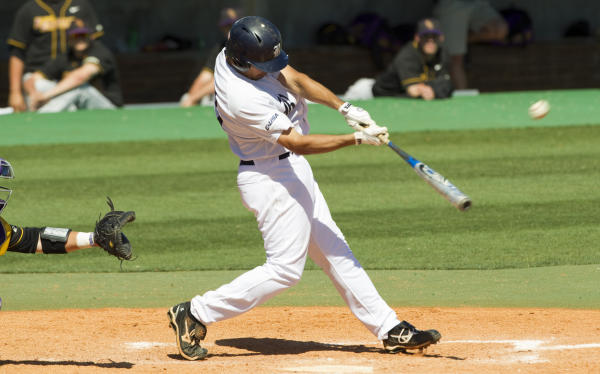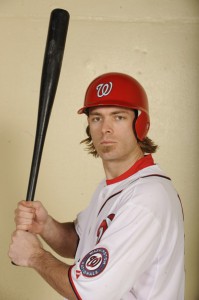By now, we’ve grown accustomed to it. Nats GM Mike Rizzo acquires yet another player with a questionable injury past, hoping to find a new market inefficiency and getting a better player in the long term than how the rest of the league valued the player in the short term. This topic came up last week as the Nats seemingly severed ties with Matthew Purke and we immediately began talking about the wasted bonus money … three days later he re-signed a minor league deal, but he’s still an integral part of this discussion.
This post attempts to go through all of Rizzo’s injury-risk player acquisitions (draft, trade or FA), to see how he’s doing in terms of these high risk acquisitions. I may have missed out on someone; please let me know if you think someone else merits discussion. I’m sure there’s deep-draft picks worth discussing in prior drafts that our readers may remember; please pipe up in the comments section. In each section they’re basically in reverse chronological order.
Draft
- Erick Fedde, 1st round pick in 2014 (18th overall), RHP from UNLV, $2.5M bonus (over-slot, ~10th pick money). I reviewed this pick after it happened and maintain the same stance I had in June; I thought Fedde was over paid and over drafted, but (in the Nats defense) the combination of the picks right before us (which included one Brandon Finnegan, who was on the Royals post-season roster) and right after us probably sealed Fedde’s selection. Verdict: Obviously, it is far too early to tell how Fedde will turn out, so there is no judgement to pass here. Fedde had the Tommy John surgery in Mid May, so he won’t even throw his first pro pitch until mid next season.
- Lucas Giolito, 1st round pick in 2012 (16th overall), RHP from Harvard-Westlake HS (CA), $2.9M bonus (well over-slot, equivalent to 7th overall pick slot). Giolito was rumored to be in the mix for 1-1 in 2012 before a “strain” in his pitching elbow caused him to miss most of his senior year. This “strain” turned out to really be a “partial tear,” but the Nats saw value in getting a potential 1st overall talent mid-first round. Giolito rehabbed, threw a few innings, then had TJ surgery on 8/31/12. Since, Giolito’s rehab went perfectly, throwing 40 innings in 2013 and another 100 in 2014. Despite his limited workload in 2014, he was named the Nats minor league pitcher of the year and has rocketed up prospect charts. He currently is the unquestioned #1 Nats minor league prospect and should feature as a top 10 prospect in all of baseball. Verdict: so far, so good. They say there’s “no such thing as a pitching prospect,” so the wheels could still come off the bus, but Giolito is trending up and the gamble is looking like it will pay off.
- Kevin Dicharry, 24th round pick in 2012, RHP from Texas. Dicharry was good early in his college career but missed most of his college career with shoulder issues. His pro debut was good enough: a 2.84 ERA in 25 GCL innings in 2012. He started 2013 in Short-A, got hit hard in 3 outings, and was abruptly released to my surprise. Verdict: failure … but it’s kind of hard to say that a 24th round pick was a failure for not panning out, even if he was perfectly healthy.
- Robert Orlan, 30th round pick in 2012, RHP from UNC. Orlan suffered an elbow injury late in the 2012 college season and was immediately placed on the 60-day DL by the team after they drafted him. Baseball Prospectus does not have any injury/surgery history, so I do not know what, if any procedures he had done in 2012. Orlan was decent for Auburn in 2013 but struggled in 2014 and couldn’t make the level jump to full-season ball. He’s already been relegated to the bullpen and may not be long for the org. Verdict: not looking good … but again, hard to really pass any harsh judgement on a 30th round pick. The fact that he has even lasted two pro years makes him a success already.
- Anthony Rendon, 1st round pick in 2011 (6th overall), 3B from Rice. $6M bonus, well over-slot at the time. Rendon’s dropping out of the top 2-3 picks was a huge draft-day shock; we’re talking about a college player of the year who scouts had penciled in as the 2011 1-1 pick for nearly two years. But nagging ankle injuries in both his sophomore and junior year scared off the teams above Washington, who probably tripped over themselves running to the podium to take him. We know the rest of the story now; by mid 2013 he was a starter, and he posted a 6.5 bWAR season in 2014. Verdict: huge success so far.
- Matthew Purke, 3rd round pick in 2011, LHP from TCU. Given a $4.15M MLB contract. The impetus for this post. Purke was a 1st round pick out of high school, then went 16-0 in his freshman year of college, earning 2nd team all American honors. Shoulder bursitis cost him a ton of starts his sophomore year, but the Nats gambled on him anyway. A healthy Purke would have easily been a top 10 pick in 2011, so the Nats got a potential top 10 talent in the 3rd round. Of course, we know how this story goes from here: Purke could never get going in 2012 and had to have shoulder surgery. Then he throws 90 decent innings in 2013 … only to drop off a cliff in 2014 before having TJ surgery. Now he’s out until at least June 2015. But, as we’ve seen this week, at least he’s not on the 40-man roster any more. But more time remains to be seen as to whether Rizzo’s $4M gamble can pay off in any capacity. Verdict: check back at the end of 2015, but not looking great.
- Sammy Solis, 2nd round pick in 2010. A herniated disc in his back cost him the entire 2009 season, but he roared back with a solid 2010 to profile as the 2nd round pick he ended up being.
- Nathan Karns, 12th round pick in 2009, RHP from Texas Tech. Karns was hurt when he got drafted, and didn’t throw a pitch in 2009 or 2010. He had to have shoulder surgery in June of 2010. He finally made his pro debut in 2011, and by 2012 was the Nats minor league pitcher of the year after going 11-4 with a 2.17 ERA across low-A and high-A. By mid 2013 he was making his MLB debut to provide cover for injured starters. Karns was flipped to Tampa Bay in the Jose Lobaton deal (also bringing back two decent prospects in Felipe Rivero and Drew Vettleson) and spent most of 2014 in Durham (where he took a step back, posting a 9-9 record with a 5.08 ERA in 27 AAA starts). Verdict: success for the team, given what he helped acquire, even if he’s struggling for Tampa Bay. (Thanks to commenter JohnC for reminding me to fully list his trade bounty).
(post-posting thanks to NationalsProspect’s Luke Erickson, who provided the Orlan injury link and reminded me of Solis’ back injury during college).
Trade Acquisitions
- Denard Span, acquired from Minnesota on 11/29/12 for Alex Meyer. Span missed a huge chunk of the 2011 season after suffering a pretty bad concussion. He missed a month in 2012 after injuring his shoulder diving for a ball. So there was some legitimate injury concerns following Span around, though I don’t recall really discussing it at the time. I didn’t necessarily like the trade when it happened, but that was more because I thought Bryce Harper could be our center fielder for the next decade. Nonetheless, after struggling for stretches, Span inarguably was worth every cent of his exercised option for 2015, and though this wasn’t *that* big of an injury gamble, it has paid off. Verdict: Success.
- Ryan Mattheus was acquired on 7/31/09 from the Rockies for Joe Beimel, just two weeks after he underwent Tommy John surgery. By mid 2011 he was an effective middle reliever for the team, and contributed a 1.3 bWAR season in 2012 as a good 6th/7th inning right hander. In 2013 he broke his pitching hand in a fit of pique and basically never recovered; he lost his bullpen spot to Aaron Barrett in 2014 and, being out of options and not really having that great a season in AAA, was released last month. Verdict: Success, considering what we gave up and considering that he may still be with the organization had he not punched a wall. (Thanks to commenter Wally for reminding me of the Mattheus acquisition).
Free Agent Signings
- Dan Haren, 1yr $13M for the 2013 season. Haren had missed time in 2012 for a back issue, and had taken a huge uncharacteristic step backwards in performance from 2011. It was enough so that some thought (including me) the Nats were going to get a bounce-back season and a return to his #2 starter form. Uh, no. Haren at one point in the 2013 season was the *worst* starter statistically in the league (the team was just 4-11 in his first 15 starts, and he had a 6.15 ERA when he was summarily sent to the D/L with a soft tissue injury that even Haren himself didn’t know he had). He bounced back enough in the 2nd half to save his statistical season, but the damage was done. Verdict: failure of a signing, but to be fair I don’t believe Haren’s issues in 2013 were lingering back issues.
- Chien-Ming Wang. Signed a combined 3 years of contracts worth $7M from 2010-2012. He had shoulder surgery in July of 2009. He missed the whole 2010 season, most of 2011 too. But he showed *just* enough in the tail end of 2011 to earn a $4M deal for 2012, where he promptly got hammered. To make matters worse, the guy whose rotation spot he took (Ross Detwiler) was usually the one coming in to relief him and pretty soon it was apparent the team had gone with the wrong horse. In the end, Wang gave the team 94 innings and 6 wins for his 3 guaranteed contracts. Verdict: well, a failure, but didn’t hurt the team as they raced to 98 wins in 2012. Just cost money.
- Brad Lidge: he missed most of 2011, his final season in Philadelphia, and the Nats took him on a 1yr/$1M flier. After overcoming sports hernia surgery, Lidge gave up 12 hits and 11 walks in just 9 1/3 innings before being mercifully released, never to play again. Verdict: failure, but a good gamble.
- Christian Garcia was picked up as a MLFA in mid 2011 after the Yankees gave up on him following his third elbow surgery in 5 years. He was un-hittable in our minor league system in 2012 (he gave up just 31 hits in 52 minor league innings that year), was called up and was effective enough to be added to the 2012 post-season roster. Unfortunately, Garcia’s injury luck did him no favors: he lost all of 2013 to a partial flexor tear in his arm, and never made it back in 2014, eventually being released in June of 2014. All that promise, just couldn’t stay healthy. Verdict: can’t possibly call a MLFA mid-season waiver claim a failure, no matter how little the team got out of him. Another good gamble.
Conclusion: actually Rizzo looks pretty good here. His draft pickups have mostly worked out; just Purke stands out as a possible loser. His only real injury-risk trade acquisition worked out. Haren and Wang were pretty high-visibility failures … but Lidge and Garcia were low-cost risks that had good upside if they worked out.
Did I miss anyone?
http://m.mlb.com/video/?content_id=7189149&topic_id=8080130

